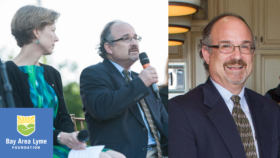BAL 10-year Anniversary Series
10 Years of Collaboration Bringing Hope: How Dr. John Aucott’s Relationship with Bay Area Lyme Helped Get Groundbreaking Biobanks Launched to Fuel the Research Engine of Lyme Disease Investigations
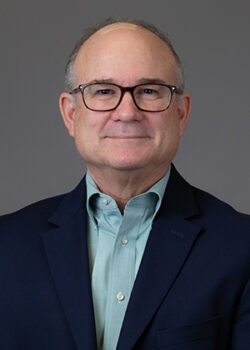 In this blog, part of our 10-year anniversary blog series, we talk with John Aucott, MD, Associate Professor of Medicine at Johns Hopkins University, Director of the Lyme Disease Research Center, about his work and how his investigations are helping us understand persistent/chronic Lyme infections. A long-term collaborator and grant recipient of Bay Area Lyme Foundation, Dr. Aucott reflects on his history with our organization, the ongoing plight of Lyme disease patients, and the slow growth in government funding for investigations into the disease. He talks about the early days of identifying the need for well-characterized samples from Lyme patients and his role in helping launch biobank programs, including his own SLICE Study Biorepository and BAL’s Lyme Disease Biobank.
In this blog, part of our 10-year anniversary blog series, we talk with John Aucott, MD, Associate Professor of Medicine at Johns Hopkins University, Director of the Lyme Disease Research Center, about his work and how his investigations are helping us understand persistent/chronic Lyme infections. A long-term collaborator and grant recipient of Bay Area Lyme Foundation, Dr. Aucott reflects on his history with our organization, the ongoing plight of Lyme disease patients, and the slow growth in government funding for investigations into the disease. He talks about the early days of identifying the need for well-characterized samples from Lyme patients and his role in helping launch biobank programs, including his own SLICE Study Biorepository and BAL’s Lyme Disease Biobank.
Bay Area Lyme: I want to take you right back to the very beginning of your relationship with Bay Area Lyme (BAL), the founding of your SLICE study and our Lyme Disease Biobank (LDB) and talk about everything that was happening 10 years ago. People talk about the “norming, storming and forming” stages of organizations, and there was an awful lot of activity going on 10 years ago in the world of Lyme disease. And so, please share your thoughts on what was happening around that time, your part in it, and how you came into the picture with BAL and our biobank.
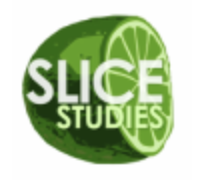
John Aucott: My first memory is that I flew out to California and my agenda at that time was getting people interested in research. There was very little funding for Lyme disease research, and to some extent there still isn’t a great amount of funding for Lyme disease, especially the kind of research I do, which is clinical translational research. I’m an MD, so my research involves bridging basic science to human beings to patients. So, to be very candid about it, I was interested in getting BAL interested in my work. I pitched what we were doing. We had already set up the Johns Hopkins SLICE study, the Study of Lyme disease Immunology and Clinical Events. And at that point it was one of only two large scale biobanks collecting for Lyme disease. The other one is Dr. Gary Wormser’s, who still has a biobank in Valhalla, New York.
So, I was pitching the idea of a Lyme disease biobank to BAL, and this was a whole new concept. A biobank is a hard concept to sell initially because people don’t understand that setting up a biobank is like being Levi Strauss: It’s selling the Levis and the picks, and the shovels—not selling them the actual gold in your pocket. And it’s a hard pitch because people don’t understand that somebody has to supply the foundational work so that other people can mine for the gold. But BAL caught on to the idea that the biobank that we had at Hopkins was a crucial resource that would enable collaboration with other researchers to advance the scientific understanding of disease mechanisms and potentially identify and validate biomarkers for improving diagnostics and treatments.
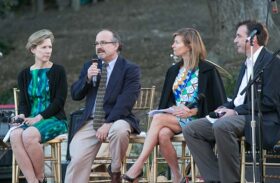
Bay Area Lyme bought into the importance of this idea. The first thing that happened was you asked me to be on the BAL Scientific Advisory Board soon thereafter. BAL expressed support for the SLICE study’s biobank at Hopkins and you actually gave us one of our first grants to help support our biobank work. So, that was the first thing that happened. We applied for a grant, and we got a grant from BAL to help us because we had not yet gotten federal funding for it. So, that was one of the first grants to support it, and now in 2023 we are finally receiving our first NIH funding.
I give Bay Area Lyme credit. BAL bought into the idea that a biobank was important, even though it’s not sexy. Donors like to hear sexy stuff like you’re going to have a new diagnostic test or a new cure. But to this day, I’ve pitched the idea that you can’t do ANY of those things unless you have human translational research to supply the data and the well-characterized samples from humans. It’s like trying to build a house without a foundation. BAL loved the idea. In fact, they loved the idea so much that you started to get interested in starting your own biobank—but that was a couple of years later!
What happened next is that David Roth was also very interested in the idea of getting a biobank launched. He was very well-networked and knew many different people in the Lyme world who were all trying to get projects and funding going back in the early days.
David Roth and I held a symposium at the National Institute of Standards and Technology (NIST). NIST is a really important agency. It’s in charge of all measurements in the United States. They keep track of the atomic clock. Anything that’s an official measurement that the government has to verify is the truth, NIST is in charge of it. It used to be called the old bureau of weights and standards. They define what an ounce of gold is, for example. And they’re in charge of any measurement that is used in the United States, including healthcare measurements. But when I went there and presented the data on measurement of Lyme disease, they were aghast at how terrible it was. I saw an opportunity to get a government agency involved in the need to improve measurement for Lyme disease diagnosis. And they bought into it.
The symposium was held on the NIST property and that’s when we expanded the idea that we needed more and bigger biobanks besides the Hopkins biobank. We understood that we either needed to expand the Hopkins SLICE study or start another biobank. And I didn’t really note it at the time, but David was already thinking perhaps there could be another biobank at Bay Area Lyme. And so, we kicked it off with that NIST symposium. After that, David and I, and people from BAL started hosting workshops to help design a biobank for BAL. That’s when I was acting as a scientific advisor to BAL to help them design what’s now the Lyme Disease Biobank (LDB).
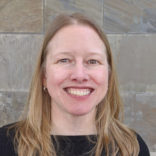
The design of the LDB is slightly different from what we were doing at Hopkins. BAL wanted this new biobank to be more inclusive and to have a broader range of patients enrolled. To this day, the LDB is a little broader and has different inclusion criteria. So, I helped BAL and David Roth design that and we patterned it off of what we were doing at Hopkins. When it became time to launch it, Liz Horn was hired to be the principal investigator for the Bay Area Lyme Biobank (LDB). I acted as an advisor during the first few years. And to some extent to this day, I am an unofficial advisor to Liz to help her with the LDB. And it has turned out to be a big success.
So now we really have two major biobanks: the Hopkins one known as the SLICE biorepository and Bay Area Lyme’s LDB, and they’re complementary. In fact, we’ve gone together on projects where investigators have used both biobanks. By design, the BAL one is a little broader and more inclusive and less exclusive. The Hopkins one is more exclusive and narrowly defined, which can be important for rigorous longitudinal studies and for validating certain types of diagnostics. Since I’m an MD, our SLICE lab is able to follow patients over time and get more longitudinal samples and data, because I’m able to follow patients as an MD researcher. So, the biobanks are different and complementary, and they’ve worked well for other researchers to access both of them and to use them both for research projects.
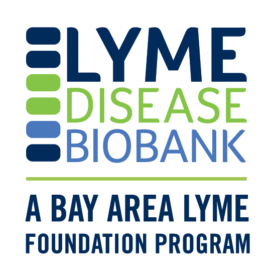 I think that’s been a huge success story for building a quality biobanking infrastructure, because without these two biobanks, really nothing would have happened in the Lyme disease field for the last 10 years because the only other samples are really owned by researchers that don’t have a lot of interest in studying persistent Lyme disease.
I think that’s been a huge success story for building a quality biobanking infrastructure, because without these two biobanks, really nothing would have happened in the Lyme disease field for the last 10 years because the only other samples are really owned by researchers that don’t have a lot of interest in studying persistent Lyme disease.
Of course, we are always having to decide what label we’re going to use for the name of the disease. Whether you call it chronic Lyme, or post-treatment Lyme, or persistent Lyme, or Long Lyme, or Lyme disease associated chronic illness or whatever people decide to call it. People call it different things. For research purposes and all the publications we have published, it’s called post-treatment Lyme disease (PTLD), a defined subset of people who have functionally impairing symptoms 6 months or longer following antibiotic treatment for Lyme disease. Without the Hopkins samples and the LDB samples there would have been no human-based research in the last 10 years because the other biobanks, the very few that there are, those investigators aren’t really interested in studying persistent Lyme disease. There really would have been no progress on the diagnostic testing side or discovery side without these two biobanks in the last 10 years. A critical point to make is this entire success in the last 10 years is the result of philanthropy. Prior to this year, there was no NIH funding for biobank foundational infrastructure. And without that, there would not have been human-based research on post-treatment Lyme disease. Funding our biorepositories has been a major success for philanthropic impact.
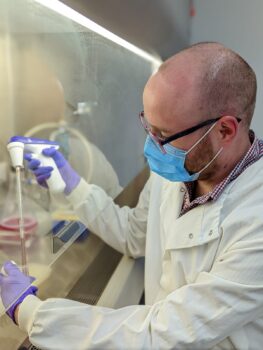
Bay Area Lyme: We could not agree more. In fact, when we announced our ELA award winners for 2022, our award-winner Peter Gwynne said, “Exciting things are happening now because people thought 10 years ago to establish the biobank. And we are now in a position to benefit from that.”
John Aucott: So that quote, I agree with one hundred percent. The researchers like Peter at Tufts—and even people like Linden Hu, who are clinical researchers — none of them have established biobanks. And the reason for that is because biobanks are incredibly hard and expensive to do and there’s really nobody that has the wherewithal to do it. It’s been valuable, and only possible because philanthropy made this vital resource available and possible for all these researchers to leverage.
So, going back to the original ideas, we all worked together on the NIST symposium. Marty Schriefer, the biobank guy at the CDC at the time, was there. I think even Allen Steere came. They had to come because it was sponsored by NIST, which is a premier government agency. This gave David Roth and me the legitimacy to say: “Hey, this is a real issue that needs to be addressed.” Marty Schriefer from the CDC concurred that the CDC has a very small biobank that’s basically running out of samples and clearly inadequate to do the job. He was able to talk about how there was a real need for biobanks, even from the CDC perspective. In fact, the CDC, when they needed samples soon after that, came to me to get their samples.
So, we got buy-in from some government agencies, including Marty who’s since left the CDC, but with the event at NIST we were able to run with that legitimacy and set up our own and we held smaller working groups to define what a biobank would look like and how to improve on the CDC’s biobank, which was running out of samples. So, that’s how our biorepository initially got its legitimacy.
Bay Area Lyme: And how did Liz Horn come into picture?
John Aucott: BAL put together the biobank funding and then it needed somebody to be the principal investigator for it. And it was clear at that point that I wasn’t going to be able to run it because I already had my own biobank and I work for Johns Hopkins, so I couldn’t really work for BAL and Johns Hopkins. So, David Roth and BAL worked together and figured out how to turn over the LDB to BAL. Then they hired Liz Horn as the PI.
Bay Area Lyme: You’ve had this long and fruitful relationship with Bay Area Lyme and obviously the Lyme Disease Biobank is central to everything that we do. It’s an integral part of how we support all of the research projects that are going on to solve the challenges of Lyme disease. But you’ve also done many other things for Bay Area Lyme. Let’s segue into some of the other projects that you’ve done in partnership with us or that we’ve funded so we can talk about how our relationship with you has progressed over the course of the last 10 years.
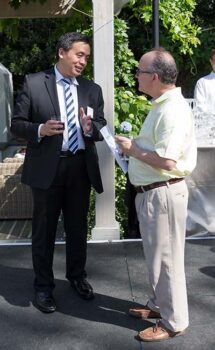
John Aucott: The other big project that was funded because of my relationship with Bay Area Lyme was the collaboration with Charles Chiu at UCSF. That project was using samples from my SLICE Lab, and we published the first gene expression model as a potential diagnostic test about six years ago. And we just had the second paper that was co-authored by Jerome Bouquet, a few months ago. And I pushed for this work to be done. I told Bay Area Lyme: All this focus on doing diagnostics on serum and blood is old science. We need to go to new science. I said, we really need to study gene expression. That’s the wave of the future. And Carin Rollins, who was on the board of BAL at the time, identified Charles Chiu and she connected Charles and me. I had the samples, and Charles had the technology, and then BAL found a donor to fund the project. Jerome Bouquet was funded as an early investigator.
Bay Area Lyme: Yes! Jerome was one of our first ELA award winners back in 2014.
John Aucott: That was because of the pilot work that he did for Charles Chiu and me. That’s probably the most successful example of a separate project—besides the biobank—was Charles, Jerome, and me, and BAL funding him on that project. He was the first author on that first paper.
These were the very early projects. Carin would have ideas and she would come to me every week with a new idea. Carin was kind of the “think tank” at that point for BAL. This was a huge success because then you found Jerome, and now Charles and I are still working on that project. And he got additional funding from BAL along the way to continue to fund it. So, we’ve kept working on it, and we’re presently working on a diagnostic for persistent/chronic Lyme disease.
Bay Area Lyme: It’s very exciting. It is one step closer every time and such an incredible incremental and also collaborative effort that you have been part of with us from the beginning.
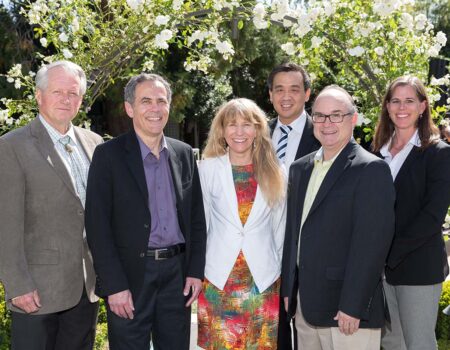
John Aucott: It’s a great example of how it has to be a collaboration because Charles Chiu is an MD like me, but again, he doesn’t see patients really. He’s a laboratorian: he develops laboratory tests. And I’m a clinical researcher. It took the two of us to do that project because he never would have had the patients and patient samples to do it otherwise because he doesn’t really see patients. And I never could have figured out the gene expression models because I’m not a big data laboratorian. So that’s an excellent example of the payoff of the biobanks’ initiative: Charles Chiu never could have done that work without the biobank samples, but I could have never done the science without somebody like him being involved. And then the third essential spoke was BAL and the funding of it. Because again, that was not being funded by the NIH. Charles is an established, big-time reputable researcher in infectious diseases, but it just shows you how terrible it has been to get government funding for Lyme disease clinical research. Thankfully, other philanthropic funders have since recognized the value of biobanks, including significant support from The Steve and Alexandra Cohen Foundation. Hopefully, 2023 marks a turning point in funding from NIH.
Bay Area Lyme: If you were talking to an external journalist or somebody not connected to Bay Area Lyme Foundation, what would be the headline that you would say about Bay Area Lyme Foundation, our development, and the impact that we’ve had on the Lyme disease community over the course of the last 10 years?
John Aucott: The headline is that BAL’s investment in Lyme disease, biobanks, and research is paying off.
Bay Area Lyme: And what does your spidey sense tell you? If you could look ahead and make any kind of predictions, what would you say is going to happen and unfold in the next five to 10 years?
John Aucott: Well, I think that there are a few threads.
One thread is that although philanthropy is still super important, philanthropy can’t continue to fund this to the level that it has to be to solve the problem. This is because almost all research that makes eventual breakthrough discoveries is being funded by the NIH because the level of funding is just different orders of magnitude.
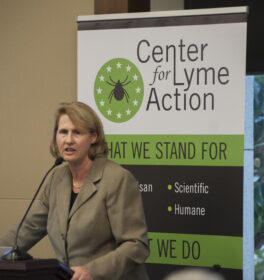
On that front, that’s where Bonnie Crater (Co-founder of BAL) has been working with the Center for Lyme Action. Bonnie will be successful because she’s methodical. But that’s one of the next steps. Without significant NIH funding, you can’t take it to the next level because foundations like BAL can fund hundred-thousand-dollar grants here and there, but the NIH funds million-dollar grants and their budget for big ticket items is hundreds and hundreds of millions of dollars.
Even big-ticket philanthropists can’t fund the kind of level that the NIH can. So, I think Bonnie’s work is the next thread. Philanthropy has been incredibly important for seed money, but it’s really only been seed money, right? Hundred-thousand-dollar grants are fantastic seed money. For young investigators, that seed money has been fundamental and incredibly important. But the hope is that this will gain us legitimacy.
The first proof of that is that the National Institute of Allergy and Infectious Diseases (NIAID) issued an RFA (Request For Applications) for post-treatment Lyme disease recently. That’s the first time they’ve ever issued an RFA for Lyme disease. What I think that means is that again, the headline is, that philanthropic investment is paying off because the good science that has come out, funded by philanthropy, has gotten the attention of NIH. And advocates have gotten the attention of NIH. There needs to be real NIH funding dedicated to this major public health problem, which there never has been before. So, that’s one thread. And, the good news is that our Hopkins biobank was just selected as one of the five NIH grant recipients from this RFA (announced July 2023) and our biobank is also a fundamental component of two of the other four grants awarded. This is exciting validation of the value of our efforts and an important step forward by NIH.
Bay Area Lyme: What about some of the other threads? What do we say to patients?
John Aucott: That’s a harder thread because the other thread is this—and this is just my bias—the science will continue to move forward, but it could be by hitting singles and doubles, if this were a baseball game. Everybody wants a grand slam or home run and occasionally somebody hits a home run but it’s often singles and doubles which win baseball games. Even Charles Chiu’s research, which is next-generation awesome, is building upon some critical incremental singles and doubles. But patients want to see the headline banner that says: “Charles Chiu hit a grand slam and the NIH recognizes that chronic Lyme is real. And now we will invest the full force of a moon shot to the moon to solve the chronic Lyme crisis.” Even if that doesn’t happen, I believe we can win the game by continuing to hit strategic singles and doubles.
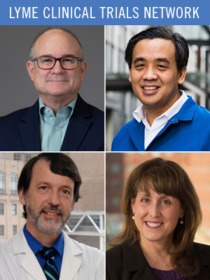 The other, even harder headline is there’s presently no quick fix to the patient’s plight. There just isn’t. The Steven and Alexandra Cohen Foundation has funded Brian Fallon, MD, MPH, to start a treatment trial network. Before the Cohens, no one has funded pilot studies. These are tremendous initiatives to test potential treatments. I’m one of the network founders and am running one of the pilot studies for the treatment trial network. It is enormously complicated and expensive. Since the NIH is not likely going to fund a treatment trial, we hope the pilot studies will help garner interest from the pharmaceutical industry.
The other, even harder headline is there’s presently no quick fix to the patient’s plight. There just isn’t. The Steven and Alexandra Cohen Foundation has funded Brian Fallon, MD, MPH, to start a treatment trial network. Before the Cohens, no one has funded pilot studies. These are tremendous initiatives to test potential treatments. I’m one of the network founders and am running one of the pilot studies for the treatment trial network. It is enormously complicated and expensive. Since the NIH is not likely going to fund a treatment trial, we hope the pilot studies will help garner interest from the pharmaceutical industry.
Bay Area Lyme: We need to focus on our wins for the Lyme community. We obviously can’t make big proclamations or predict the future. However, it’s very helpful to hear your vision because it helps manage expectations and how we share our expectations, especially with patients.
John Aucott: The positive thing is the foundational work that the biobanks have made possible. Other big-time researchers are getting interested in Lyme disease even without funding. So, I think one example we need to point out is Bill Robinson at Stanford University. Bill and I have worked together since the get-go, and I met him through friends at Stanford. So, I was introduced to Bill, and Bill and I have been hugely successful. And some of his researchers, like Lisa Blum, got a young investigator award from Bay Area Lyme.
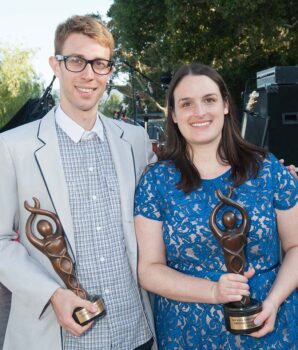
Bay Area Lyme: Yes. She and Jerome Bouquet were our first two ELA award winners in 2014. So, that’s a nice thread in our whole story.
John Aucott: Bill and I were already collaborators funded by an outside philanthropist. Then BAL funded Lisa who then brought that project to fruition. Bill and I are still publishing papers on that work to this day. So it’s been a tremendous success. Then there are newer people at Stanford interested. And there’s the work happening in Irving Weissman‘s lab. There’s a researcher, Christine Jacobs Wagner, who’s at Stanford as the peptidoglycan researcher. She’s a Howard Hughes investigator and wouldn’t have gotten involved except for Bill Robinson and me. We’re getting a critical mass of the original researchers who were great researchers, but now we’re getting some real big shots like Bill Robinson and Christine Jacobs Wagner. She’s starting to get interested in Lyme disease. So, there’s a critical mass forming around Stanford and BAL and people that are getting interested in Lyme disease. And now with the recent NIH funding, that’s a positive thread in that more established researchers are starting to come into the field. Before, no established researchers would come into the Lyme field because all the money was in HIV/AIDS. And there was no reason to go into a field that was so difficult when there was no NIH money. But now they’re starting to get interested because they see the potential because of the foundational work done by Bill Robinson and Charles Chiu. And so that foundational work has gotten other more established researchers interested in working in Lyme disease.
Additionally, Liz Horn and I were speakers at a June 2023 workshop at the National Academies of Sciences, Engineering, and Medicine on the topic of infection-related chronic illnesses. This forum helped validate the similarities of infection-associated chronic illnesses including Lyme disease, Long COVID, and ME/CFS and the value of biorepositories and longitudinal collaborative research in moving the field forward towards solutions.
Bay Area Lyme: Thank you for spending time with us today, John. We appreciate everything that you do for the Lyme disease community and for your long-term relationship and collaboration with Bay Area Lyme.
This blog is part of our BAL 10-Year Anniversary blog series. Bay Area Lyme Foundation provides reliable, fact-based information so that prevention and the importance of early treatment are common knowledge. For more information about Bay Area Lyme, including our research and prevention programs, go to www.bayarealyme.org.
